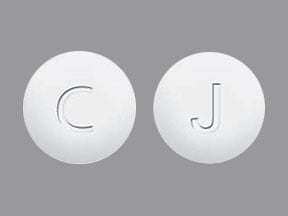
Zomig Zmt Coupons & Savings Card – Discount Prices from $52.83
Brand for: Zolmitriptan
My prescription
Edit
2.5MG, Zolmitriptan (30 Tablet Disintegratings)
Select pharmacy

CVS
$52.83
COUPON PRICE
Walmart
$82.60
COUPON PRICE
Walgreens
$103.80
COUPON PRICE
Albertsons
$116.70
COUPON PRICEZomig Zmt savings card
Show this card to your pharmacist
CVS
$52.83
BIN
ID
PCN
GRP
019876
LH4AA7E361
CHIPPO
LHX
Powered by
More prescriptions for migraine
More prescriptions for migraine
Zomig Zmt dosage forms
| Dosage | Quantity | Price from | Per unit |
|---|---|---|---|
| 2.5MG | 30 Tablet Disintegratings | $52.83 | $1.76 |
| 5MG | 30 Tablet Disintegratings | $52.83 | $1.76 |
Zomig Zmt Warnings
This document outlines essential safety information and warnings related to the use of zolmitriptan (Zomig). It is crucial to read the following points thoroughly and discuss any concerns with your healthcare provider.
Cardiovascular Risks: There is a rare risk of heart attack and chest pain shortly after taking zolmitriptan. These events can occur even in individuals without existing heart conditions. Those at increased risk for heart disease, such as individuals with a personal or family history of heart conditions, diabetes, high blood pressure, older age, smoking habits, or obesity, should be evaluated by a healthcare provider before starting zolmitriptan. Initial doses may be administered under medical supervision, and heart health should be monitored regularly. Seek immediate medical attention if you experience chest pain, shortness of breath, lightheadedness, arm pain, or cold sweats.
Heart Rhythm Concerns: Zolmitriptan can cause serious changes in heart rhythm. This risk is higher for individuals with a history of arrhythmias. If you experience a racing heartbeat after taking zolmitriptan, discontinue use and contact your healthcare provider.
Stroke and Brain Injury: There is a risk of stroke or brain bleeding with triptan use. Symptoms such as sudden weakness, severe headache, facial drooping, breathing difficulties, or speech and vision changes require immediate medical evaluation. These symptoms can mimic migraines, so proper diagnosis is critical. Individuals with a history of strokes should avoid zolmitriptan.
Blood Vessel Complications: Zolmitriptan can induce blood vessel spasms, potentially leading to insufficient blood supply to certain body parts. Symptoms may include stomach pain, bloody diarrhea, or Raynaud's syndrome (a tingling sensation or color change in fingers and toes). In rare cases, vision loss may occur. Discontinue use and seek medical advice if these symptoms appear.
Serotonin Syndrome: This medication may increase serotonin levels, potentially leading to serotonin syndrome, especially if combined with other serotonin-raising drugs like certain antidepressants. Symptoms include a racing heart, high fever, mood changes, movement issues, and hallucinations. Discontinue use and consult your provider if these symptoms arise.
Blood Pressure Elevation: Zolmitriptan may elevate blood pressure. Regular monitoring is recommended. Symptoms of dangerously high blood pressure include headache, breathing difficulties, chest pain, vision changes, and confusion. Immediate medical help is advised if these occur. Do not use zolmitriptan if you have uncontrolled high blood pressure.
Phenylketonuria Caution: The orally disintegrating tablet form of zolmitriptan contains phenylalanine, which can be harmful to individuals with phenylketonuria (PKU). Inform your healthcare provider and pharmacist of your medical history to determine the safest form of zolmitriptan.
Contraindications: Zolmitriptan should not be used by individuals with the following conditions:
- History of heart disease, chest pain, or heart attack
- Heart blood vessel spasms
- Irregular heart rhythms
- History of stroke or mini-stroke
- Migraines accompanied by double vision, dizziness, movement issues, or one-sided weakness
- Blood vessel or blood supply disorders (e.g., peripheral artery disease or ischemic bowel disease)
- Uncontrolled high blood pressure
- Recent use (within 24 hours) of another triptan or ergot-based medication
- Current or recent (within two weeks) use of monoamine oxidase (MAO)-A inhibitors
Always consult your healthcare provider before beginning zolmitriptan treatment to ensure it is appropriate and safe for your condition.
Zomig Zmt Side Effects
When taking this medication, some common side effects might occur, but they are generally mild and manageable. You may experience nausea, dizziness, or a tingling sensation in your arms or legs. Some people report feelings of warmth or cold, dry mouth, sleepiness, or general body weakness. Occasionally, you might feel a sensation of tightness or pressure in your neck, throat, or jaw, which is typically not serious. If any of these side effects persist or worsen, it's important to consult with your healthcare provider. There are also some less frequent side effects that have been reported. These include an unusual taste in your mouth, additional feelings of heaviness, or excessive sweating. While these symptoms are less common, they should still be monitored and discussed with your healthcare provider if they occur. In rare cases, serious side effects can arise and require immediate medical attention. These include symptoms that mimic a heart attack, such as chest pain, irregular heartbeat, or shortness of breath. Additionally, be aware of signs of a stroke, like sudden weakness, trouble speaking, or vision changes. Serotonin syndrome, a rare but serious condition, may present with symptoms such as hallucinations, severe dizziness, or muscle twitching. An allergic reaction, though uncommon, could manifest as a rash, severe dizziness, or difficulty breathing. If you experience any of these serious side effects, seek medical help immediately. Always keep communication open with your healthcare provider regarding any side effects you experience.
Zomig Zmt Interactions
When taking Zolmitriptan (Zomig), it is crucial to be aware of potential drug interactions. If you are using MAO inhibitors, such as isocarboxazid, linezolid, methylene blue, moclobemide, phenelzine, procarbazine, Rasagiline, safinamide, Selegiline, or Tranylcypromine, avoid using them with Zolmitriptan. Combining these can lead to a severe, possibly fatal reaction. Consult your doctor on when to safely start or stop these medications.
Additionally, Zolmitriptan may interact with drugs that increase serotonin levels, potentially leading to serotonin syndrome. This risk is heightened when starting or increasing doses of medications like certain antidepressants (SSRIs such as Fluoxetine and paroxetine, and SNRIs like Duloxetine and Venlafaxine), or using substances like MDMA and St. John's wort.
If you're prescribed ergotamine medications, such as [Dihydroergotamine](https://savehealth.com/dihydroergotamine), or "triptan" medications like Sumatriptan and Rizatriptan, ensure you space out their use with Zolmitriptan to prevent serious side effects. Your healthcare provider will guide you on the appropriate timing between doses.
Inform your doctor and pharmacist of all medications and supplements you are taking, as Zolmitriptan's interactions extend to numerous other drugs, including but not limited to: Almotriptan, Bromocriptine, cisapride, and dihydroergotamine. Some interactions may not be recommended, while others require careful management. Always follow your healthcare provider's advice on the safe use of Zolmitriptan with other treatments.
What is the difference between Zomig and zolmitriptan?
Zomig is the brand name for the medication zolmitriptan. They are essentially the same drug, with Zomig being the branded version and zolmitriptan being the generic name. Both are used to treat migraine headaches.
What is zolmitriptan ODT?
Zolmitriptan ODT (orally disintegrating tablet) is a medication used to treat migraine headaches. It works by narrowing blood vessels around the brain and reducing substances in the body that can trigger headache pain, nausea, sensitivity to light and sound, and other migraine symptoms. The ODT form dissolves on the tongue, making it convenient for those who may have difficulty swallowing tablets during a migraine attack.
Is Zomig being discontinued?
As of the latest available information, Zomig (zolmitriptan) has not been officially discontinued. However, availability can vary by region and may be subject to change. It is advisable to check with local pharmacies or healthcare providers for the most current information regarding its availability.
Is Zomig a narcotic?
Zomig is not a narcotic. It is a medication used to treat migraine headaches and belongs to a class of drugs known as triptans.
What is ODT medicine for migraines?
ODT stands for "orally disintegrating tablet." In the context of migraines, an ODT medication is designed to dissolve on the tongue without the need for water, which can be beneficial for individuals who experience nausea or vomiting during a migraine attack. An example of an ODT medication for migraines is rizatriptan, which is used to treat acute migraine headaches.
